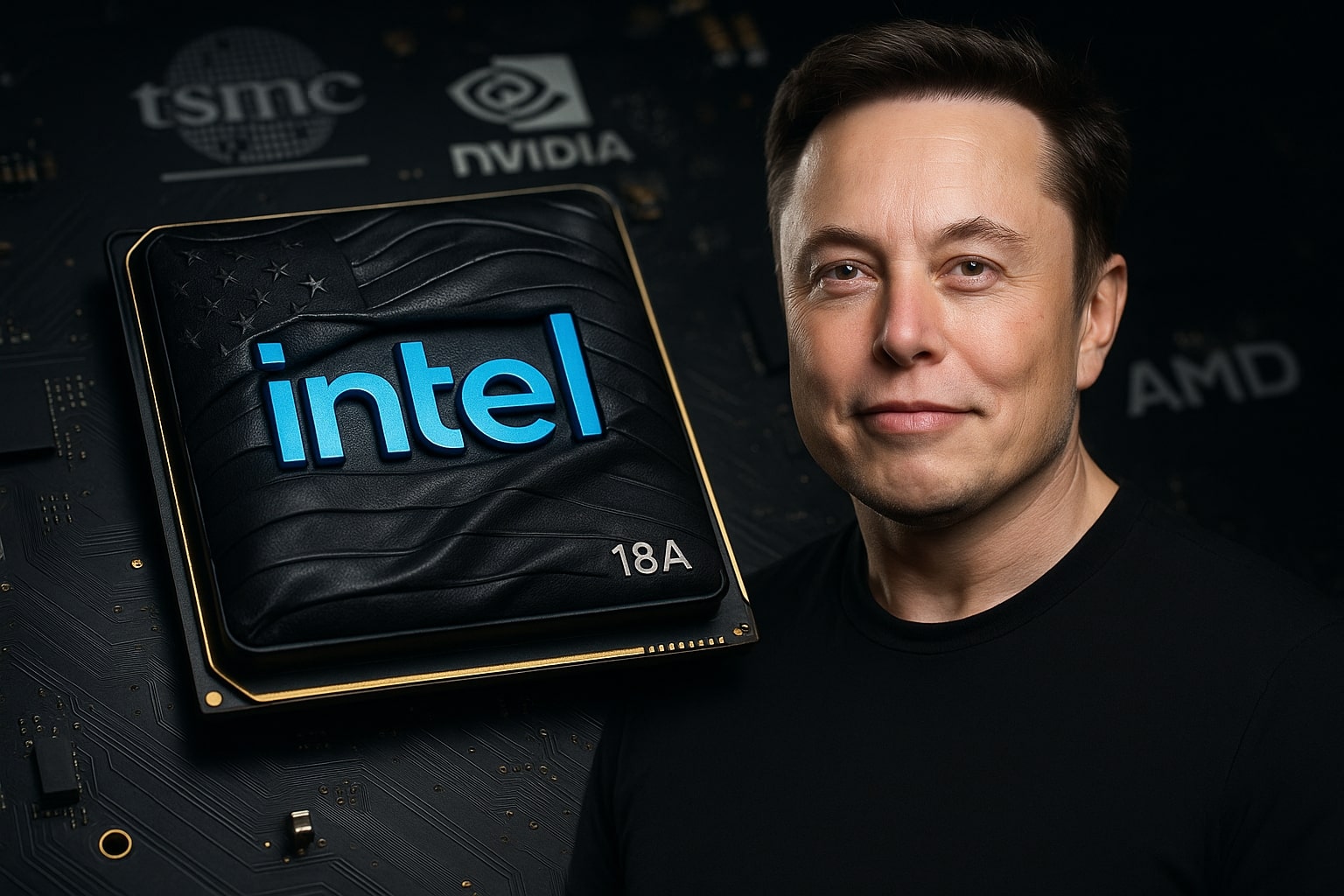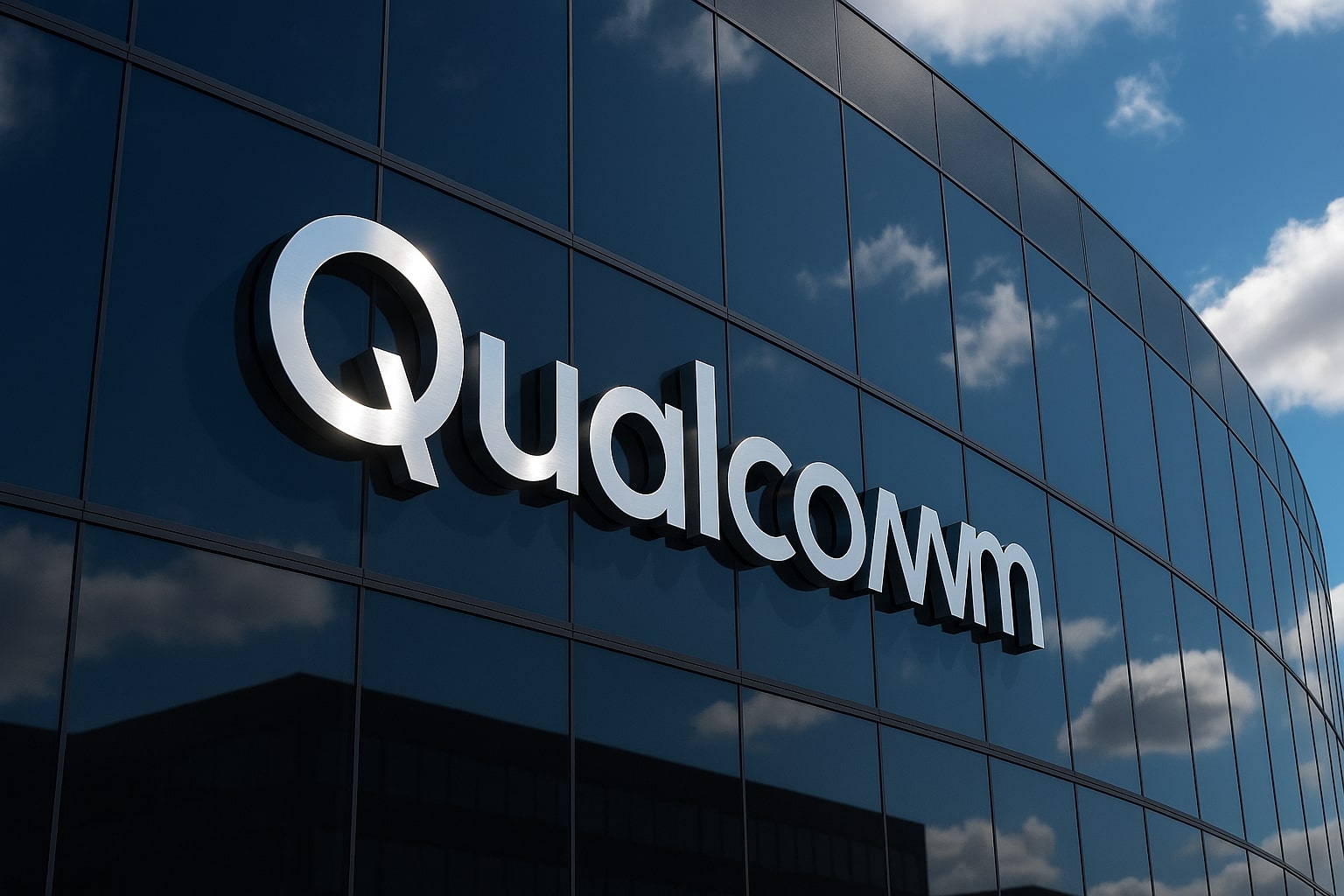
Intel Stock Price Forecast - INTC Climbs to $38.33 as Tesla Deal Buzz and 124% Profit Growth
Intel surged after Q3 net income rose 124% to $4.06B, fueled by cost cuts, $20B CHIPS Act funding, and speculation of a Tesla foundry deal | That's TradingNEWS
Intel Corporation (NASDAQ:INTC) — From Foundry Gamble to Government Stake: The Chipmaker’s Most Pivotal Turning Point in a Decade
Intel Corporation (NASDAQ:INTC) entered November 2025 trading around $38.33, up 0.52% intraday, after a turbulent but transformative quarter that blended restructuring, geopolitical backing, and newfound investor optimism. The semiconductor heavyweight — now valued at $182.02 billion — sits at the crossroads of technological renewal and political strategy, as the U.S. government’s 10% equity stake underlines its new role in national industrial policy.
The Intel recovery narrative has shifted dramatically over the past twelve months: from an underdog trailing NVIDIA (NASDAQ:NVDA) and AMD (NASDAQ:AMD) in AI innovation, to a strategic asset positioned at the core of Washington’s manufacturing and defense reshoring agenda.
Washington’s Stake and the CHIPS Act Windfall: Intel Becomes America’s Strategic Semiconductor
The U.S. government’s 10% ownership, formalized in August under President Trump’s industrial policy, is both a lifeline and a leash. It stems from the CHIPS and Science Act, which since 2022 has funneled tens of billions in grants and loans into U.S. chipmakers to reduce foreign dependence. Intel has received a lion’s share of those incentives — reportedly over $20 billion in cumulative commitments — enabling construction of its advanced fabs in Arizona, Ohio, and Ireland.
This partial nationalization represents a radical break from past policy. The government’s stake isn’t symbolic: it reflects Washington’s intent to anchor domestic chip sovereignty, ensuring that AI, defense, and quantum computing chips are produced under U.S. jurisdiction. Commerce Secretary Howard Lutnick emphasized that Intel’s foundry expansion was “essential to national resilience,” confirming that the Treasury’s strategic fund could expand its position if performance milestones are met.
Investors are now treating NASDAQ:INTC less like a cyclical chipmaker and more like a quasi-public infrastructure play — a company with geopolitical backing but constrained profit autonomy.
Earnings Recovery: Revenue Climbs to $13.65 Billion, Net Income Soars 124% YoY
Intel’s latest quarter (reported October 23, 2025) marked its most constructive turnaround in three years. Revenue reached $13.65 billion, beating consensus of $13.10 billion, while net income surged 124% year-over-year to $4.06 billion. The firm posted earnings per share (EPS) of $0.23, a stark reversal from the $0.46 loss recorded a year earlier.
Operating expenses fell 19.7% to $4.36 billion, reflecting CEO Lip-Bu Tan’s aggressive cost optimization. Intel’s net margin expanded to 29.76%, while EBITDA rose 54% to $3.51 billion, showing that restructuring efforts are finally producing tangible operating leverage.
Still, guidance for Q4 2025 remains cautious at $0.08 EPS, implying modest profitability as Intel contends with pricing pressure in data-center chips and margin drag from its foundry ramp-up. Analysts expect full-year EPS of -$0.11, underscoring the fragility of its recovery.
Intel’s balance sheet, however, is fortified: $30.9 billion in cash, $204.5 billion in total assets, and a lean 0.38 debt-to-equity ratio — its healthiest leverage profile since 2017. Free cash flow hit $4.08 billion, up 2,200% year-over-year, signaling renewed liquidity after multiple quarters of outflows.
Institutional Confidence Rebuilds: 64.5% Ownership and ProShare’s $166 Million Position
Institutional investors have re-entered Intel in force. ProShare Advisors LLC raised its holdings by 5.6% last quarter, acquiring 390,576 additional shares for a total of 7.42 million shares worth $166.25 million, representing 0.17% ownership. Other funds — including PrairieView Partners, West Branch Capital, and HFM Investment Advisors — initiated or expanded positions, lifting total institutional ownership to 64.53%.
The surge in institutional flows mirrors Intel’s stabilization above $38, as risk appetite returns to semiconductor equities following the U.S. shutdown resolution. Market data show that Intel shares have risen 2.4% month-to-date, outperforming defensive peers like Texas Instruments (NASDAQ:TXN) while lagging the high-beta momentum of NVIDIA (up 4.2%) and AMD (up 4.6%).
Investors appear to be positioning ahead of foundry deal confirmations, notably the potential Tesla partnership that could redefine Intel’s manufacturing credibility.
Tesla Foundry Rumors Ignite Market Optimism: A Pivotal Test for Intel’s Comeback Strategy
Speculation surged following Elon Musk’s comments at Tesla’s shareholder meeting, where he cited Intel’s foundry division as a possible partner for future AI and autonomous driving chips. With TSMC and Samsung already running at capacity, Musk’s remarks hinted that Intel’s U.S.-based facilities could play a vital role in Tesla’s AI supply chain.
If confirmed, such a partnership could inject billions in incremental revenue and validate Intel’s foundry ambitions after years of underperformance. The stock jumped 2.3% in Friday’s session after Musk’s remarks, its sharpest single-day gain since August.
Intel’s foundry arm — long the weakest link in its diversification plan — is now emerging as the company’s most strategic asset, especially as geopolitical tensions push automakers and AI developers toward domestic suppliers.
Read More
-
JEPQ ETF (NASDAQ:JEPQ) Climbs Toward $59 as 10.3% Yield and $31B AUM Cement Its Status as JPMorgan’s Income Powerhouse
10.11.2025 · TradingNEWS ArchiveStocks
-
XRPI & XRPR ETFs Rally Over 8% as XRP Trades Above $2.53 — DTCC Listings Ignite Institutional XRP ETF Boom
10.11.2025 · TradingNEWS ArchiveCrypto
-
Natural Gas Price (NG=F) Surges Above $4.40 as Record LNG Exports and Tight Storage Ignite Bullish Winter Rally
10.11.2025 · TradingNEWS ArchiveCommodities
-
USD/JPY Price Forecast - Dollar/Yen Steadies Near 154.00 as U.S. Fiscal Optimism Offsets BoJ Policy Caution
10.11.2025 · TradingNEWS ArchiveForex
Leadership Overhaul: Executive Departures Signal Deep Cultural Reset
Intel’s internal shake-up continues. Saurabh Kulkarni, Vice President of AI Product Management, departed to join AMD, following earlier exits by John Kalvin (global channel operations) and Dermot Hargaden (European commercial head). These departures reflect CEO Lip-Bu Tan’s sweeping overhaul aimed at streamlining operations and consolidating sales under AI and Foundry growth initiatives.
Sources within the company confirm that AI division staffing will be realigned with Intel’s Data Center and Network Edge segments to eliminate redundancy. The restructuring could reduce SG&A costs by $1.2 billion annually by 2026, a key margin lever amid intense competition.
The leadership vacuum also creates space for external talent — potentially from Nvidia and Qualcomm — as Intel repositions itself for high-performance computing, data centers, and government defense contracts.
AI Lag and the SambaNova Strategy: Intel’s Counteroffensive in Accelerated Compute
Intel’s collaboration with SambaNova Systems underscores its AI hardware counterstrategy. Rather than acquiring the startup, Intel structured an embedded-partnership model to integrate SambaNova’s AI training architecture into Intel’s data center chips. This “ambush strategy,” as analysts described it, allows Intel to bridge the performance gap with Nvidia’s CUDA ecosystem without direct M&A exposure.
The move follows Intel’s 2024 exit from unprofitable divisions, including Optane memory, signaling a pivot toward AI, foundry, and defense computing. Early benchmarks suggest Intel’s Gaudi3 accelerators, when combined with SambaNova software, can deliver 35–40% performance efficiency gains against legacy Xeon configurations — critical for recapturing data-center clients like AWS and Meta.
Valuation Metrics and Price Structure: A Recovery Still Below Historical Norms
At $38.33 per share, Intel trades at a price-to-sales ratio of 1.7 and a price-to-book of 1.71, roughly 20% below its five-year median. The P/E ratio of 3,606 is skewed by one-time accounting effects but reflects the market’s cautious optimism about Intel’s turnaround trajectory.
The stock’s 52-week range of $17.67–$42.47 illustrates the volatility inherent in its transformation phase. Technically, $39.50 acts as immediate resistance, followed by $42.50, while support holds near $36.80 — a critical line defending the uptrend established since July.
If the Tesla partnership or new government contracts materialize, analysts see upside to $45–$48, with longer-term resistance near $52, last reached in early 2022.
Insider Transactions and Ownership Trends
Insider activity on Intel’s profile shows selective buying by senior management post-Q3 results, signaling growing confidence in Intel’s rebound plan. CFO David Zinsner reportedly increased his stake modestly following the October earnings release, marking his first purchase since 2023. Meanwhile, institutional inflows have been concentrated in passive ETFs like Vanguard Semiconductor ETF and iShares U.S. Tech ETF, both of which boosted their Intel weighting by 0.5%.
Despite the turnover in executive ranks, insider selling remains minimal — a constructive signal compared with peers like AMD and Qualcomm, where profit-taking has been more aggressive.
Technical and Strategic Crossroads for NASDAQ:INTC
Intel now faces a dual narrative: on one hand, a resurgent foundry arm supported by U.S. policy and potential Tesla demand; on the other, execution risks tied to leadership instability and delayed AI competitiveness.
Yet the data tells a story of stabilization. Revenue growth of 2.78% YoY, expense reduction of 19.73%, and free cash flow exceeding $4 billion show a company regaining operational rhythm. Its return on capital at 1.34% remains modest but trending upward — the first sequential improvement in ten quarters.
TradingNews Verdict: BUY Bias with Strategic Tailwind
Considering the confluence of CHIPS Act capital, government equity backing, potential Tesla foundry exposure, and strong institutional re-entry, TradingNews maintains a BUY bias on Intel Corporation (NASDAQ:INTC).
While execution challenges persist, the market’s recalibration of Intel from a cyclical laggard to a strategic sovereign semiconductor asset marks the start of a secular re-rating. A breakout above $42.50 could confirm the next leg higher, targeting $48–$50, while downside remains cushioned by structural support and policy protection.
Intel’s transformation is no longer theoretical — it is measurable in cash flow, political capital, and strategic necessity. The combination of AI repositioning, government stakeholding, and operational recovery sets NASDAQ:INTC on a trajectory few expected eighteen months ago — a rebuilt American semiconductor powerhouse entering 2026 with renewed relevance and momentum.


















